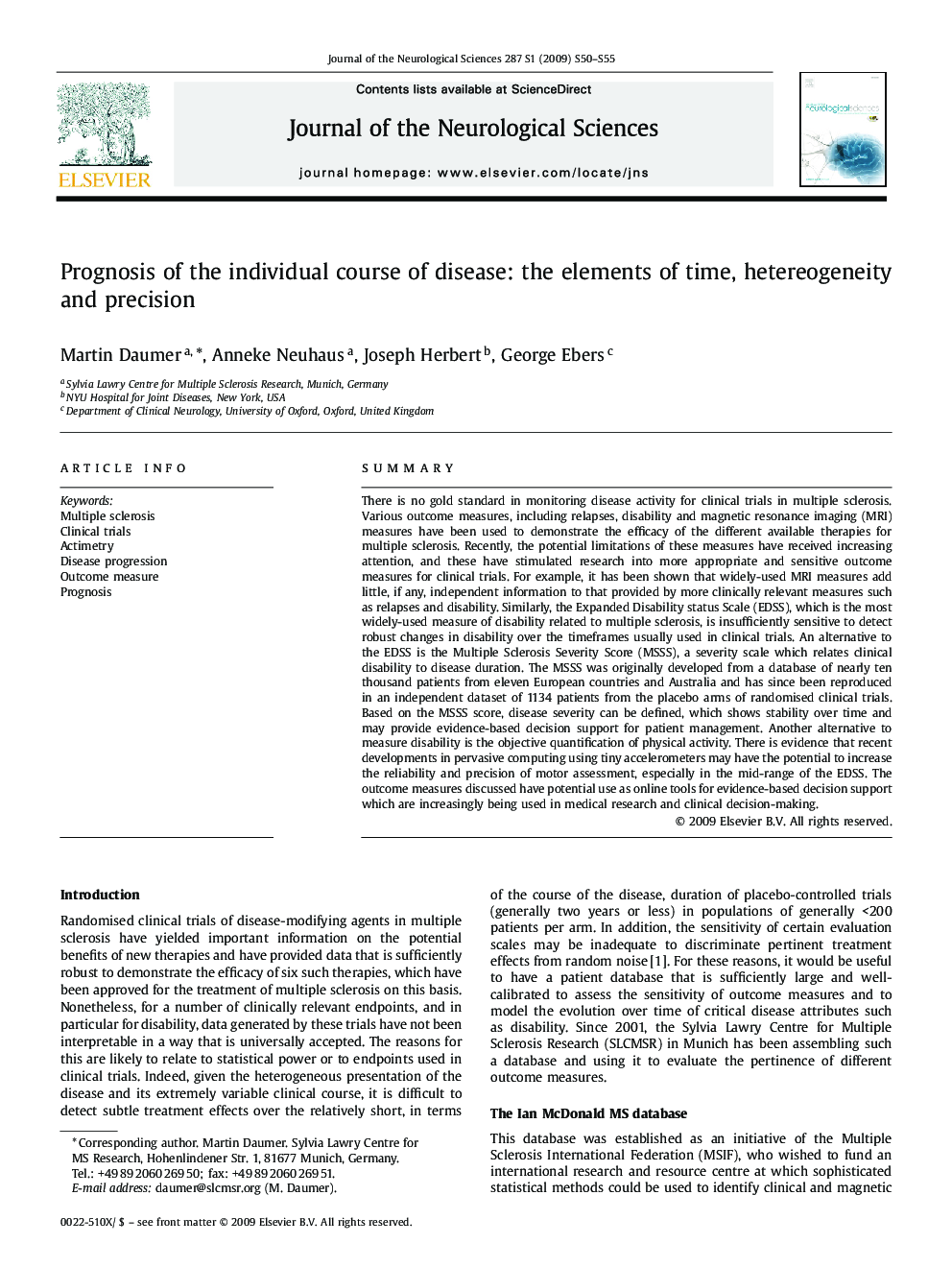| کد مقاله | کد نشریه | سال انتشار | مقاله انگلیسی | نسخه تمام متن |
|---|---|---|---|---|
| 1914901 | 1047286 | 2009 | 6 صفحه PDF | دانلود رایگان |

SummaryThere is no gold standard in monitoring disease activity for clinical trials in multiple sclerosis. Various outcome measures, including relapses, disability and magnetic resonance imaging (MRI) measures have been used to demonstrate the efficacy of the different available therapies for multiple sclerosis. Recently, the potential limitations of these measures have received increasing attention, and these have stimulated research into more appropriate and sensitive outcome measures for clinical trials. For example, it has been shown that widely-used MRI measures add little, if any, independent information to that provided by more clinically relevant measures such as relapses and disability. Similarly, the Expanded Disability status Scale (EDSS), which is the most widely-used measure of disability related to multiple sclerosis, is insufficiently sensitive to detect robust changes in disability over the timeframes usually used in clinical trials. An alternative to the EDSS is the Multiple Sclerosis Severity Score (MSSS), a severity scale which relates clinical disability to disease duration. The MSSS was originally developed from a database of nearly ten thousand patients from eleven European countries and Australia and has since been reproduced in an independent dataset of 1134 patients from the placebo arms of randomised clinical trials. Based on the MSSS score, disease severity can be defined, which shows stability over time and may provide evidence-based decision support for patient management. Another alternative to measure disability is the objective quantification of physical activity. There is evidence that recent developments in pervasive computing using tiny accelerometers may have the potential to increase the reliability and precision of motor assessment, especially in the mid-range of the EDSS. The outcome measures discussed have potential use as online tools for evidence-based decision support which are increasingly being used in medical research and clinical decision-making.
Journal: Journal of the Neurological Sciences - Volume 287, Supplement 1, December 2009, Pages S50–S55